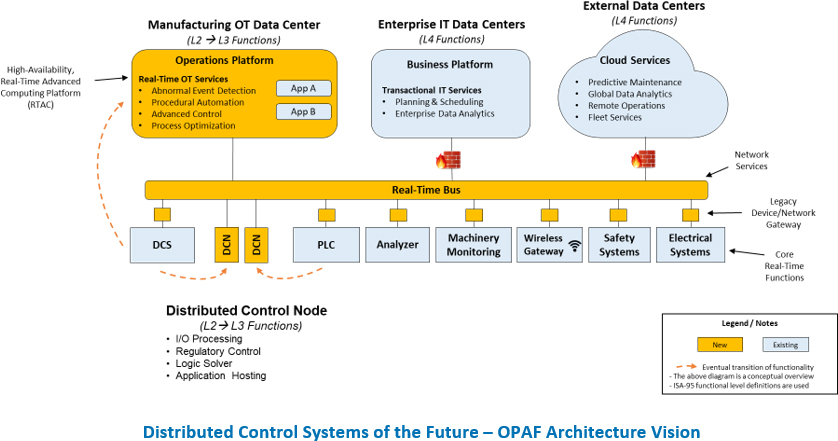




New approaches to DCS design that incorporate late binding techniques and utilize engineering in the cloud and virtualization concepts offer clear benefits for end users. These include lower TCO, longer DCS life, fewer disruptive changes, and improved ability to manage change and implement continuous improvement. The largest payoff comes from reduced obsolescence. End user organizations should study the virtualization strategies of their potential future DCS suppliers, paying special attention to supplier plans for migrating existing installations (including controllers) to a future virtualized environment.
Another new design approach impacting the DCS market is the modular design. Taking a modular approach to DCS design offers significant cost savings both from a project standpoint and throughout the plant lifecycle. Modular approaches also offer smaller footprint, easier regulatory compliance, and a path to open systems and standardization. It is no accident that major industry initiatives being driven by end users from ExxonMobil to Bayer heavily incorporate modular design concepts. Modularization concepts also provide a “future proof” path to adoption of advanced new technologies such as the Industrial IoT, analytics, virtualization, and cloud compute technologies. Many resources are available for end users interested in adopting modular automation in their plants.

Industrial control system (ICS) virtualization offers clear benefits for end users. These include lower TCO, longer ICS life, fewer disruptive changes, and improved ability to manage change and implement continuous improvement. The largest payoff comes from reduced obsolescence. End user organizations should study the virtualization strategies of their potential future ICS suppliers, paying special attention to supplier plans for migrating existing installations (including controllers) to a future virtualized runtime environment.
End users should consider adopting the new breed of I/O. Leading automation suppliers have developed a new I/O that is either characterizable, configurable, or a combination of the two. Characterizable I/O includes hardware modules that plug into a rack and can represent analog input, analog output, digital input, digital output, etc. The type of module plugged into the rack determines the type of signal. Modules can be plugged anywhere in the rack and are location independent. Configurable I/O solutions take a similar approach in terms of point independence and flexibility, but the I/O points are configured through software rather than hardware modules. Some vendor solutions offer a combination of characterizable and configurable I/O. Vendors also offer software tools to support the commissioning and integration of smart I/O cabinets without a complete DCS.
The benefits of characterizable and configurable I/O go beyond simply reduced hardware, footprint, and wiring. They allow end users to separate the hardware-related and software-related aspects of the system. With fully adaptable and standard I/O and control hardware, end users can theoretically design and test all the software aspects of the system before it is deployed to the target system hardware. This allows the software to be deployed into the hardware infrastructure at the very late stages of the project. Often referred to as “late binding,” this can compress capital project schedules, reduce risks, and shorten the time to production.
As end user organizations downsized, many lost expertise from their in-house process automation groups. The aging workforce and retirements have also contributed to lost expertise. In many cases, users have supplanted this expertise cost-effectively using the services of knowledgeable DCS supplier personnel with expertise in engineering, maintaining, and optimizing the DCS.
Except for very large and sophisticated multinational corporations, end users should consider turning to suppliers to design and commission Ethernet networks with ultra-high availability and uninterrupted network service through multiple failure modes. Providing the necessary degree of isolation between DCS and corporate network functions to ensure safety and security, while at the same time allowing appropriate information from the DCS to flow to enterprise networks, requires the knowledgeable use of servers and other network infrastructure such as routers, switches, and firewalls.
For more information or to purchase the Distributed Control Systems for Power Generation Selection Guide, please contact us.
Learn more about ARC's Technology Supplier Evaluation and Selection Guides
Learn more about ARC Strategic Services at Advisory Services for Industry Leaders




